Have you ever thought about what happens to your old mobile phones, laptops, or broken…
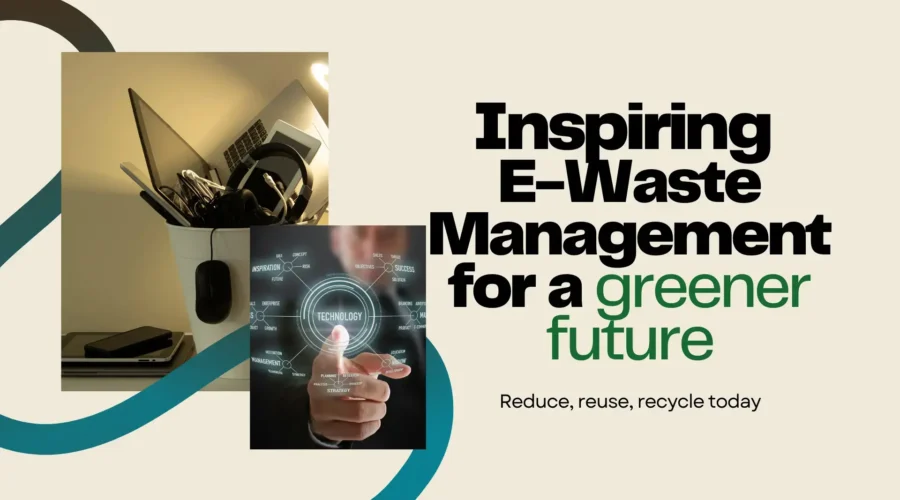
5 Inspiring Ways E-Waste Management Can Build a Greener Tomorrow
We use gadgets like phones, computers, and TVs every day. But what happens when they stop working or get too old? That’s where E-Waste Management comes in. E-waste means electronic waste, like broken or outdated devices. If we don’t take care of e-waste properly, it can hurt the environment. But if we manage it the right way, we can make the world cleaner and healthier for everyone.
In this article, we’ll learn five exciting ways E-Waste Management can help us protect our planet. These ideas show how taking care of old gadgets can save the environment and encourage people and businesses to make better choices for a greener future.
1. Recycling Old Electronics to Reduce Waste

The first inspiring way to improve E-Waste Management is recycling. Recycling means taking old or broken electronic items and using their parts to make new products. Instead of throwing these gadgets in the trash, recycling helps save valuable materials like metals, plastic, and glass. These materials can be reused instead of mining or producing new ones.
For example, think about your old smartphone. The battery, screen, and internal parts of the phone contain metals like gold, silver, and copper. Instead of letting these valuable materials end up in a landfill, recycling them allows factories to use them in new devices. Many big companies, like Apple and Samsung, have started recycling programs to collect old devices and reuse their parts.
Dell is a great example of how recycling can help the planet. Every year, they recycle millions of old computers. They take these used gadgets, break them down, and use the parts to make new products. This helps save valuable materials and cuts down on pollution from making new electronics. Recycling like this not only keeps harmful e-waste out of the environment but also provides materials we can use again in the future.
2. Donating Old Electronics to Those in Need
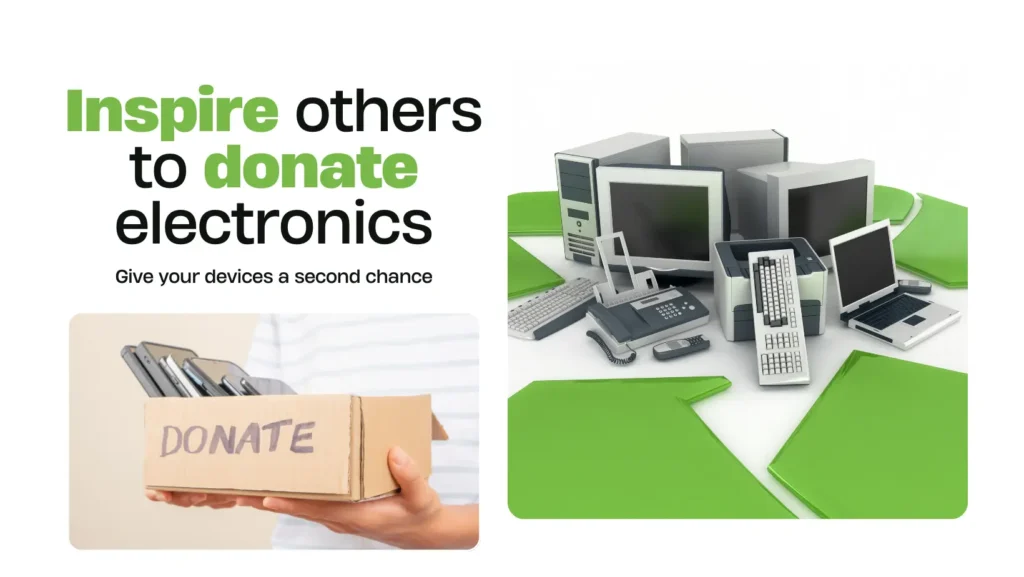
The second inspiring way to manage e-waste is through donation. Not all old electronics need to be thrown away. Many devices are still in good condition but are no longer being used. Instead of letting them sit unused or throwing them in the trash, we can donate these gadgets to schools, charities, or people who need them.
For example, consider an old laptop you no longer use because you bought a new one. That laptop might still work well for a student who cannot afford a computer. Many organizations, like Computers for Schools Canada, collect old laptops, repair them, and donate them to children and schools in need.
This method of E-Waste Management not only reduces waste but also helps bridge the technology gap for people who cannot afford new devices. Donating electronics inspires us to care for others while protecting the environment from unnecessary waste.
Imagine how many children can study better if they have access to donated computers and gadgets. By donating, we turn old electronics into tools for education and growth.
3. Innovative Upcycling of Electronics
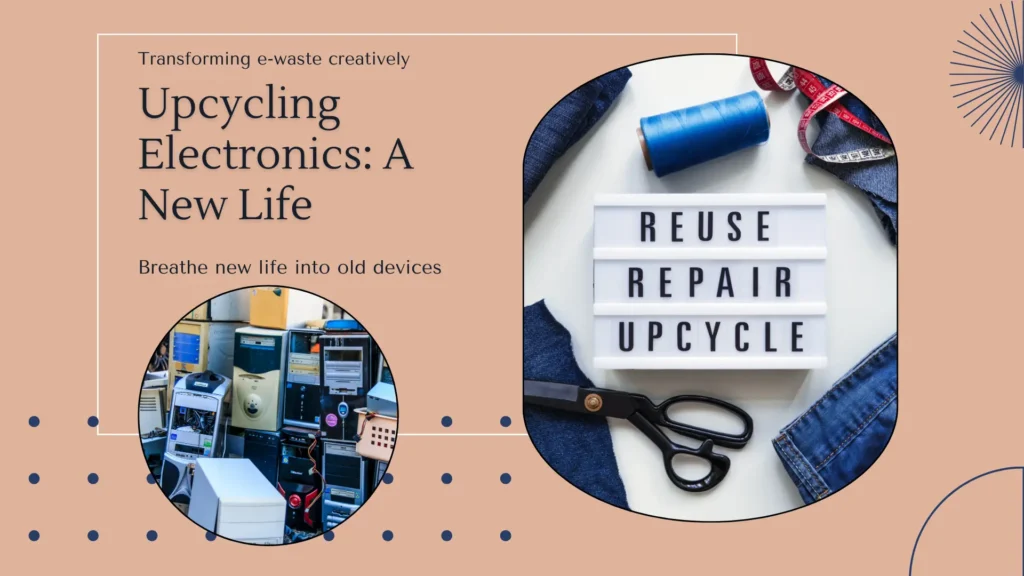
The third inspiring way to manage e-waste is through upcycling. Upcycling is a creative process where old electronics are turned into something new and useful. Unlike recycling, which breaks down materials, upcycling focuses on giving gadgets a second life by transforming them into new products.
For example, old TVs or computer screens can be turned into beautiful decorations or aquarium tanks. Another creative example is making clocks, lamps, or artworks from old motherboards or wires. Many artists and designers around the world are using e-waste to create amazing products.
A great example of upcycling is the Ewaste RJ Project in India. This project collects old electronic items like keyboards, cables, and CDs to create unique and colourful art pieces. These upcycled products are sold to people who want sustainable and eco-friendly decorations.
Upcycling not only reduces e-waste but also encourages creativity and innovation. It shows that with a little imagination, old gadgets can be turned into something useful and beautiful. This way of E-Waste Management inspires us to think differently about waste.
4. Raising Awareness Through Education and Campaigns
The fourth inspiring way to build a greener tomorrow through E-Waste Management is by spreading awareness. Many people still do not know about the dangers of e-waste or how to manage it properly. By educating people, we can inspire them to handle electronics responsibly.
Schools, companies, and governments can organize campaigns to teach people about E-Waste Management. These campaigns can show why e-waste is harmful and how recycling, donating, or upcycling can make a big difference.
For example, EcoATM is a program in the United States that educates people while helping them recycle old phones. They have kiosks where people can deposit their old devices and receive cash in return. This initiative motivates people to recycle their phones rather than throw them away.
Schools around the world are also teaching students about E-Waste Management. By involving children, we create a generation that understands the importance of protecting the environment.
Through education, we can inspire millions of people to take small steps that lead to big changes. Awareness is key to managing e-waste and building a cleaner, greener future.
5. Encouraging Businesses to Take Responsibility

The fifth and final inspiring way to handle E-Waste Management is by encouraging businesses to take responsibility for the products they make. Many companies are now creating programs to collect old electronics from customers and recycle them properly.
Apple has a program called “Apple Trade-In.” This program lets people give back their old devices when they buy new ones. Apple recycles these old gadgets so they don’t go to waste or end up in the trash. In the same way, companies like HP and Samsung also have programs to collect and recycle old electronics.
Governments are making rules to ensure companies take care of their electronic waste. This is called the “Extended Producer Responsibility (EPR)” policy. This means that companies must plan what to do with their products once people stop using them.
By making businesses part of the solution, we can reduce the amount of e-waste generated and ensure proper recycling or disposal. Companies have the resources to create a big impact, and their efforts inspire others to do the same.
India is working hard to solve the problem of e-waste, which comes from old and broken electronic devices like phones, computers, and TVs. Here are some real-life examples of e-waste management initiatives in India that show how people and organizations are helping:
- Attero Recycling: Attero Recycling is a company in India that collects e-waste and recycles it. They take old electronics and use special machines to remove valuable materials like gold and silver. This is a great way to reuse parts of the waste and reduce pollution. Attero Recycling is helping e-waste management in a big way.
- Karo Sambhav: Karo Sambhav is another group that works on e-waste management. They help companies and people give their old electronics to proper recycling centres. They also teach people why it’s important to recycle e-waste instead of throwing it away. They are making India cleaner by managing e-waste the right way.
- E-Parisaraa: E-Parisaraa is India’s first government-approved e-waste recycling company. They take old electronics like computers, batteries, and wires and recycle them safely. By doing this, they keep harmful materials out of the soil and water. E-Parisaraa is an important part of India’s e-waste management efforts.
- Delhi’s E-Waste Eco-Park: The government in Delhi is making an e-waste eco-park to handle e-waste better. This park will take old electronics from people and businesses, recycle them, and get rid of them safely. This project will help make Delhi a cleaner and greener city.
- Clean to Green Campaign: The “Clean to Green” campaign teaches people about the dangers of e-waste and shows them how to dispose of it properly. It encourages people to give their old electronics to recycling centres instead of throwing them in the trash. This campaign is spreading awareness about e-waste management across India. These examples show how India is working on e-waste management to protect the environment. We can make our country cleaner and safer by recycling, reusing, and throwing away electronics the right way.
Conclusion: A Greener Tomorrow Starts Today Adopting E-Waste Management
E-waste is a big problem, but we can fix it by managing it properly. We can recycle old electronics, give them to people who need them, use them in new and creative ways, talk to others about the problem, and ask businesses to help. This way, we can make our planet cleaner and greener.
These five inspiring ways show us that every small action matters. When we recycle or donate an old gadget, we are saving the environment. When we talk to others about e-waste, we help bring change. When businesses take action, they show us how to work toward a better and greener future.
Everyone can help manage e-waste. Whether you are a student, a teacher, a business owner, or just someone with an old phone, you can make a difference. Together, we can make sure e-waste does not harm our planet and instead becomes something useful for a cleaner, brighter future.

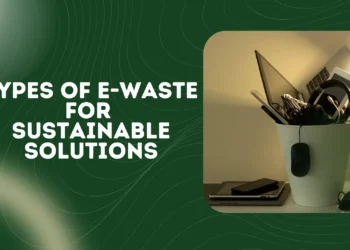
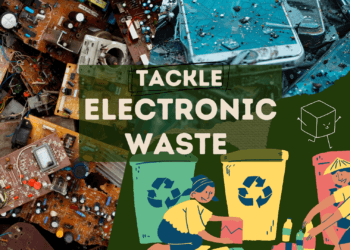
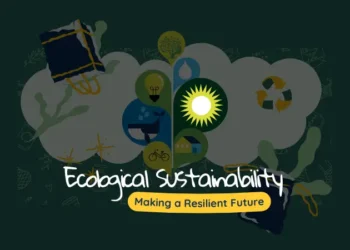
Can I get this article and future articles?
Certainly! You can subscribe to our newsletter to receive this article and stay updated with future ones. Thank you!